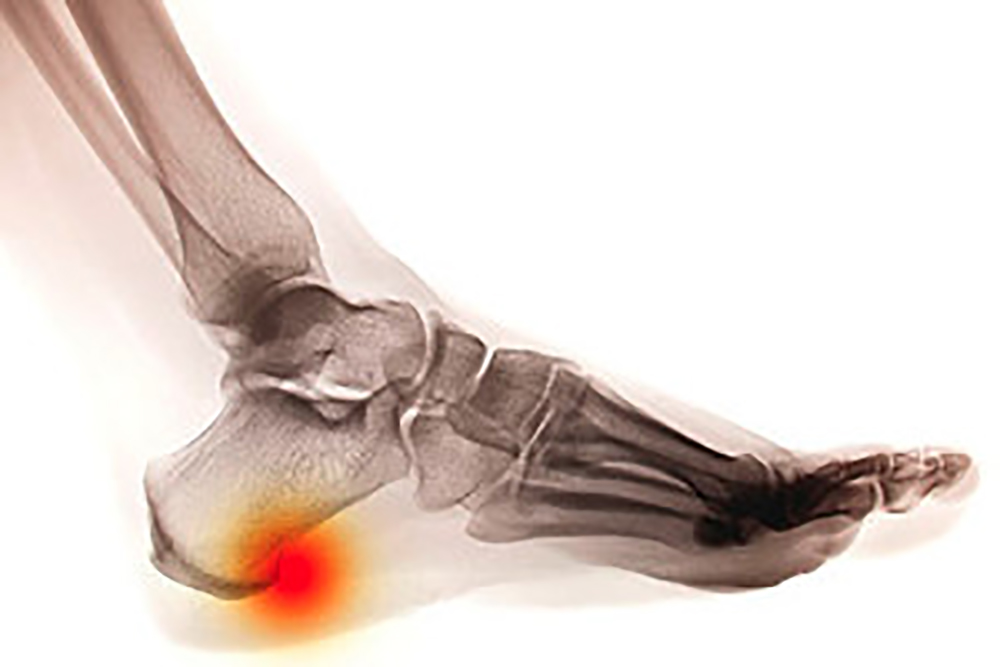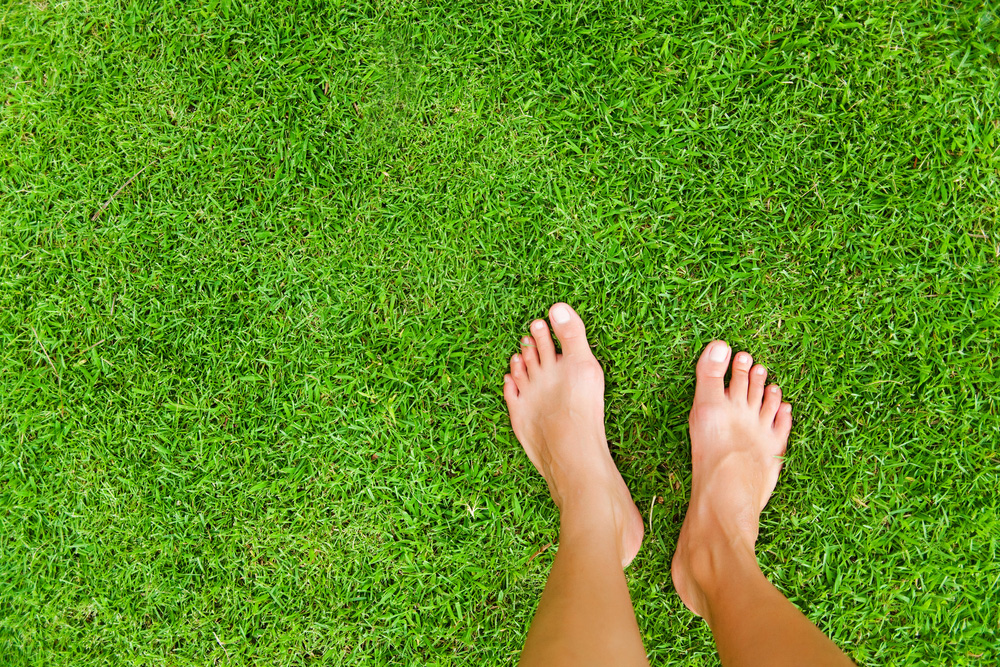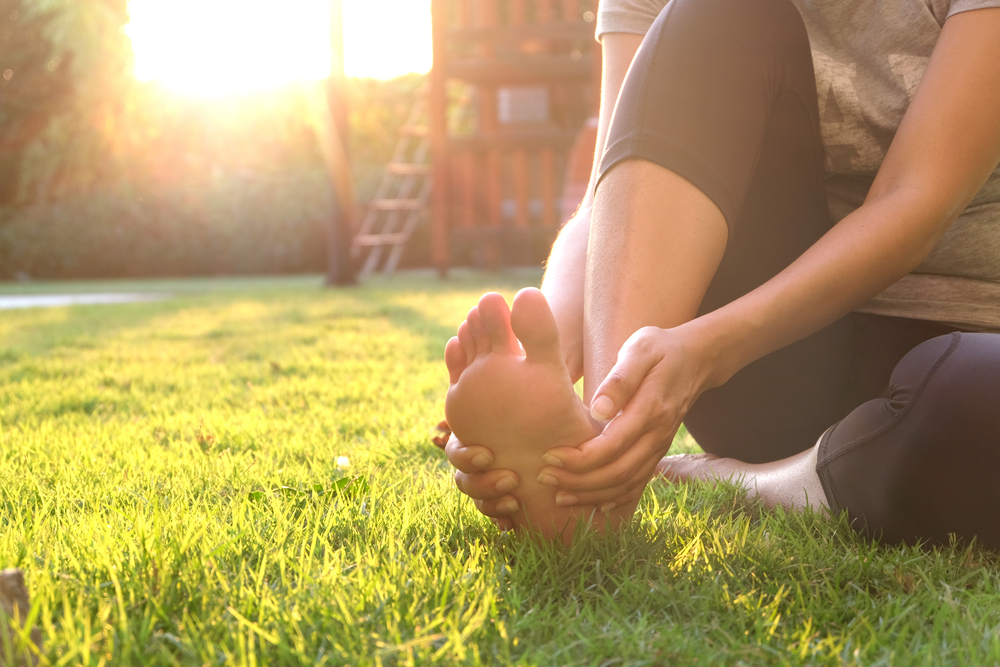
 Heel spurs are small, bony growths caused by excessive calcium deposits forming on the heel of the foot. These can grow on the bottom of the heel or the heel bone where the plantar fascia ligament attaches the heel to the toes. This connective tissue keeps the foot in a comfortable arch position, but a heel spur can damage the fibrous tissue and it will not be able to perform its job. In addition to causing every step one takes to be painful, heel spurs can cause long-term foot problems. Trying to purchase shoes that accommodate heel spurs can be an overwhelming task, yet it is imperative to wear proper footwear. When choosing footwear to alleviate pain and prevent further damage from heel spurs, it is crucial to look for shoes with firm rearfoots or backs of shoes. These are less apt to bend during movement and thus provide more support to the heel. Shoes should also have additional cushioning and a flexible forefoot that bends and stretches easily with movement. If you suffer from heel spurs, consult with a podiatrist who can help you with treating this condition, as well as suggest the best footwear to help with pain and prevention.
Heel spurs are small, bony growths caused by excessive calcium deposits forming on the heel of the foot. These can grow on the bottom of the heel or the heel bone where the plantar fascia ligament attaches the heel to the toes. This connective tissue keeps the foot in a comfortable arch position, but a heel spur can damage the fibrous tissue and it will not be able to perform its job. In addition to causing every step one takes to be painful, heel spurs can cause long-term foot problems. Trying to purchase shoes that accommodate heel spurs can be an overwhelming task, yet it is imperative to wear proper footwear. When choosing footwear to alleviate pain and prevent further damage from heel spurs, it is crucial to look for shoes with firm rearfoots or backs of shoes. These are less apt to bend during movement and thus provide more support to the heel. Shoes should also have additional cushioning and a flexible forefoot that bends and stretches easily with movement. If you suffer from heel spurs, consult with a podiatrist who can help you with treating this condition, as well as suggest the best footwear to help with pain and prevention.
Heel spurs can be incredibly painful and sometimes may make you unable to participate in physical activities. To get medical care for your heel spurs, contact Dr. Robert Hope of Riverside Podiatry. Our doctor will do everything possible to treat your condition.
Heels Spurs
Heel spurs are formed by calcium deposits on the back of the foot where the heel is. This can also be caused by small fragments of bone breaking off one section of the foot, attaching to the back of the foot. Heel spurs can also be bone growth on the back of the foot and may grow in the direction of the arch of the foot.
Older individuals usually suffer from heel spurs and pain sometimes intensifies with age. One of the main conditions spurs are related to is plantar fasciitis.
Pain
The pain associated with spurs is often because of the weight placed on the feet. When someone is walking, their entire weight is concentrated on the feet. Bone spurs then have the tendency to affect other bones and tissues around the foot. As the pain continues, the feet will become tender and sensitive over time.
Treatments
There are many ways to treat heel spurs. If one is suffering from heel spurs in conjunction with pain, there are several methods for healing. Medication, surgery, and herbal care are some options.
If you have any questions please feel free to contact our offices located in Tuscaloosa, and Fayette, AL and Fayette, AL. We offer the newest diagnostic and treatment technologies for all your podiatric needs.
 Tarsal tunnel syndrome can be particularly bothersome to runners. This condition occurs in an individual when a nerve called the posterior tibial nerve becomes compressed. As a result of this compression, an individual might feel pain or tingling sensations. Runners exert a lot of pressure on their feet; therefore, this condition can be quite bothersome to these athletes. Although recommended treatment options will vary from runner to runner, sometimes wearing orthotics may help. Another potential remedy might be strengthening and improving the flexibility of the feet. Sometimes, overpronation might be the culprit for a case of tarsal tunnel syndrome, so carefully monitoring one’s running style might also be of use. Contact a podiatrist today for more information.
Tarsal tunnel syndrome can be particularly bothersome to runners. This condition occurs in an individual when a nerve called the posterior tibial nerve becomes compressed. As a result of this compression, an individual might feel pain or tingling sensations. Runners exert a lot of pressure on their feet; therefore, this condition can be quite bothersome to these athletes. Although recommended treatment options will vary from runner to runner, sometimes wearing orthotics may help. Another potential remedy might be strengthening and improving the flexibility of the feet. Sometimes, overpronation might be the culprit for a case of tarsal tunnel syndrome, so carefully monitoring one’s running style might also be of use. Contact a podiatrist today for more information.
Tarsal tunnel syndrome can be very uncomfortable to live with. If you are experiencing tarsal tunnel syndrome, contact Dr. Robert Hope of Riverside Podiatry. Our doctor can provide the care you need to keep you pain-free and on your feet.
Tarsal Tunnel Syndrome
Tarsal tunnel syndrome, which can also be called tibial nerve dysfunction, is an uncommon condition of misfiring peripheral nerves in the foot. The tibial nerve is the peripheral nerve in the leg responsible for the sensation and movement of the foot and calf muscles. In tarsal tunnel syndrome, the tibial nerve is damaged, causing problems with movement and feeling in the foot of the affected leg.
Common Cause of Tarsal Tunnel Syndrome
The Effects of Tarsal Tunnel Syndrome
A physical exam of the leg can help identify the presence of tarsal tunnel syndrome. Medical tests, such as a nerve biopsy, are also used to diagnose the condition. Patients may receive physical therapy and prescriptive medication. In extreme cases, some may require surgery.
If you have any questions please feel free to contact our offices located in Tuscaloosa, and Fayette, AL and Fayette, AL. We offer the newest diagnostic and treatment technologies for all your podiatric needs.
 Feet can be barometers for health problems that occur in the body. The feet are often neglected, especially when there is no pain. However, major changes in foot comfort can be an indication of a larger health issue going on. Problems you can have with your feet include foot cramping, a sore or abscess that will not heal, or constantly cold feet. Foot cramping is when a muscle in the foot suddenly squeezes and cannot relax properly. This can signal dehydration, nerve and circulation problems, or neurological disease. An abscess that will not heal can be the result of diabetes or peripheral artery disease and if not treated, can become infected and gangrenous. Feet that feel cold even after putting on warm socks can be due to poor blood circulation, which can be associated with cardiovascular disease, high blood pressure, hypothyroidism, or anemia. There are many other health problems that can cause foot pain. If you are experiencing discomfort with your feet, consult with a podiatrist who can help you with a proper diagnosis.
Feet can be barometers for health problems that occur in the body. The feet are often neglected, especially when there is no pain. However, major changes in foot comfort can be an indication of a larger health issue going on. Problems you can have with your feet include foot cramping, a sore or abscess that will not heal, or constantly cold feet. Foot cramping is when a muscle in the foot suddenly squeezes and cannot relax properly. This can signal dehydration, nerve and circulation problems, or neurological disease. An abscess that will not heal can be the result of diabetes or peripheral artery disease and if not treated, can become infected and gangrenous. Feet that feel cold even after putting on warm socks can be due to poor blood circulation, which can be associated with cardiovascular disease, high blood pressure, hypothyroidism, or anemia. There are many other health problems that can cause foot pain. If you are experiencing discomfort with your feet, consult with a podiatrist who can help you with a proper diagnosis.
Foot Pain
Foot pain can be extremely painful and debilitating. If you have foot pain, consult with Dr. Robert Hope of Riverside Podiatry. Our doctor will assess your condition and provide you with quality treatment.
Causes
Foot pain is a very broad condition that could be caused by one or more ailments. The most common include:
Diagnosis
To figure out the cause of foot pain, podiatrists utilize several different methods. This can range from simple visual inspections and sensation tests to X-rays and MRI scans. Prior medical history, family medical history, and any recent physical traumatic events will all be taken into consideration for a proper diagnosis.
Treatment
Treatment depends upon the cause of the foot pain. Whether it is resting, staying off the foot, or having surgery; podiatrists have a number of treatment options available for foot pain.
If you have any questions please feel free to contact our offices located in Tuscaloosa, and Fayette, AL and Fayette, AL. We offer the newest diagnostic and treatment technologies for all your podiatric needs.
 Many beginning runners make mistakes that can cause injuries. Here are a few tips to prevent that from happening. Start with getting running shoes that are right for your feet, which includes evaluating your running style and foot type. It is recommended to replace shoes after about 350 miles, and to alternate with an extra pair when you are halfway through the lifespan of your first pair of shoes. Second, try to avoid doing too much, too soon. Experts agree that the easiest way to get injured is by running too far, for too long, too fast, and too often. It is advised to increase mileage by a maximum of 10 percent a week. It is also recommended to combine walking and running, at first, as well as taking at least one day off between runs. One of the most common causes of injury in beginners is overstriding, which consists of landing heel first with your foot ahead of the body’s center of gravity. Instead, try landing midsole, with the body’s weight directly over the foot. If you need further guidance about gait and foot type, or are having problems with your feet after running, please consult with a podiatrist.
Many beginning runners make mistakes that can cause injuries. Here are a few tips to prevent that from happening. Start with getting running shoes that are right for your feet, which includes evaluating your running style and foot type. It is recommended to replace shoes after about 350 miles, and to alternate with an extra pair when you are halfway through the lifespan of your first pair of shoes. Second, try to avoid doing too much, too soon. Experts agree that the easiest way to get injured is by running too far, for too long, too fast, and too often. It is advised to increase mileage by a maximum of 10 percent a week. It is also recommended to combine walking and running, at first, as well as taking at least one day off between runs. One of the most common causes of injury in beginners is overstriding, which consists of landing heel first with your foot ahead of the body’s center of gravity. Instead, try landing midsole, with the body’s weight directly over the foot. If you need further guidance about gait and foot type, or are having problems with your feet after running, please consult with a podiatrist.
Exercising your feet regularly with the proper foot wear is a great way to prevent injuries. If you have any concerns about your feet, contact Dr. Robert Hope of Riverside Podiatry. Our doctor will treat your podiatric needs.
How to Prevent Running Injuries
Many common running injuries are caused by overuse and overtraining. When the back of the kneecap starts wearing out and starts causing pain in your knee, this is commonly referred to as runner’s knee. Runner’s knee is a decrease in strength in your quadriceps and can occur if you’re not wearing properly fitted or supporting shoes. To prevent runner’s knee, focusing on hip strengthening is a good idea, as well as strengthening your quads to keep the kneecaps aligned.
What Are Some Causes of Running Injuries?
- One cause of a common running injury is called iliotibial band syndrome.
- Plantar fasciitis is also another common injury.
- Stress fractures can occur from overtraining, lack of calcium, or even your running style.
Best Ways to Prevent Running Injuries
- Wear footwear that fits properly and suits your running needs.
- Running shoes are the only protective gear that runners have to safeguard them from injury.
- Make a training schedule. Adding strengthening exercises as well as regular stretching can help keep you strong and limber and can lessen the possibility of injuries.
- Stretching keeps muscles limber; this will help you gain better flexibility.
If you have any questions please feel free to contact our offices located in Tuscaloosa, and Fayette, AL and Fayette, AL. We offer the newest diagnostic and treatment technologies for all your podiatric needs.